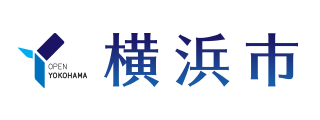- Yokohama-shi Top Page
- Child care and education
- Childcare and Early Childhood Education
- Nursery schools and childcare facilities
- Use of daycare centers
- Information about daycare centers
- Radiation measurement and response status
- Radiation response status at daycare centers, etc.
- About correspondence of accumulation and confirmation of safety generated by cleaning places that may become "micro spots" in nursery schools, etc. (June 4, 2019)
Here's the text.
About correspondence of accumulation and confirmation of safety generated by cleaning places that may become "micro spots" in nursery schools, etc. (June 4, 2019)
Last Updated August 15, 2019
We have received many inquiries from nursery schools, ward offices, and Child and Youth Bureau since some reports reported that "we request the relocation of radioactive contaminants buried in nursery schools and elementary and junior high schools in Yokohama City" was submitted to the city.
In Yokohama City, in elementary and junior high schools and nursery schools, sediments such as soil, sand, dead leaves, etc. in places that may become so-called "micro spots" (*), such as under gutters and gutters, were removed in September 2011. I removed it just in case.
The radiation dose is measured for these, and the results are below the standard values for Yokohama City, and those that have been confirmed to be safe are buried in each facility site.
We will explain the progress of the measures so far and efforts such as confirming safety.
※Micro spots are radioactive materials released in the accident at the Fukushima Daiichi Nuclear Power Station that fall along with rain and soak in earth and sand, etc., repeatedly drying and depositing, resulting in a relatively high radioactivity concentration. In general, it is said that under gutters and road gutters tend to become microspots.
[Progress of Response, etc.]
After the accident at the Fukushima Daiichi Nuclear Power Plant in March 2011, it was found that there were places in the city where dust accumulates and radiation doses were higher than in the surrounding area. Was.
In response to this, even in nursery schools, etc., in September 2011, soil, moss, dead leaves, etc., where the radiation dose may be higher than the surrounding area, such as under gutters, grooves and dead leaves, were removed just in case, placed in a plastic bag, sealed, and temporarily stored in the park.
After that, based on the national guidelines and policies prepared by the City Radiation Control Department based on the national guidelines and the situation in other cities, 0.23 microsieverts per hour at a point of 50 cm above the ground, and 0.59 microsieverts per hour at a point of 1 cm above the ground We have set a guideline for responding to microsieverts.
As a result of measuring the radiation dose of the accumulations stored at each facility from February to March 2012, most facilities have measurement results less than the standard of correspondence, and are not originally targeted for removal. It was an accumulation.
In addition, in principle, radiation dose was measured every month for places that could become micro spots at each facility from the summer of 2012 to March 2014, but it was below the standard value for correspondence .
After that, since September 2014, if the measurement result of the removed accumulation is less than the standard for Motoichi, we carry out burial processing to backfill it in the facility site in principle. At the time of burial, we also measure the radiation dose after burial at the burial site and confirm that it is below the standard of response.
In addition, among nursery schools, etc., which exceeded the standard of correspondence in the measurement between February and March 2012, facilities that exceeded the standard of correspondence in the re-measurement as of June 2016 were transferred to the storage in Hokubu Sludge Treatment Plant in Tsurumi Ward in March 2017.
June 2019 Child and Youth Bureau
-Frequently Asked Questions~
Q I saw reports that radioactive contaminated soil is buried in nursery schools. Is that true?
A In Yokohama City, in response to the effects of radioactive materials associated with the accident at the Fukushima Daiichi Nuclear Power Station, in nursery schools, etc., accumulates such as soil, sand, dead leaves, etc. in places that may become microspots, I removed it just in case.
The radiation dose is measured for these, and the results are below the standard values for Yokohama City, and those that have been confirmed to be safe are buried in each facility site.
In addition, for collections whose radiation dose exceeds the standard value for Motoichi, we move to another location (Hokubu Sludge Treatment Plant) and store them.
Q Do you not move buried soil from nursery schools?
A Collectives whose radiation dose exceeds the standard value for Motoichi are moved to another location (Hokubu Sludge Treatment Plant) and stored.
The accumulations buried in the facility premises are collected in case of soil, etc., which may become micro spots, and as a result of the measurement, it is less than the standard value of the city's standard, and it is safe. There is no plan to move because it was confirmed.
[Basic Information on Radiation]
●The Ministry of the Environment's website for the disposal of radioactive waste, etc.
You can see basic information on radiation, such as "Differences in radioactive materials, radioactivity, and radiation" and "What is becquerel and Sibelt?"
(Ministry of the Environment website)
http://shiteihaiki.env.go.jp/radiological_contaminated_waste/basic_knowledge/how_different.html (external site)
●The Radiation Monitoring Information Portal Site of the Nuclear Regulatory Commission allows you to view the current air dose rates nationwide.
(Homepage of the Nuclear Regulatory Commission)
Radiation Monitoring Information Sharing and Publication System (External Site)
Inquiries to this page
Child and Youth Bureau Childcare and Education Department Childcare and Education Support Division
Telephone: 045-671-4775
Telephone: 045-671-4775
Fax: 045-663-1925
Email address: kd-hoikushien@city.yokohama.lg.jp
Page ID: 772-769-888







